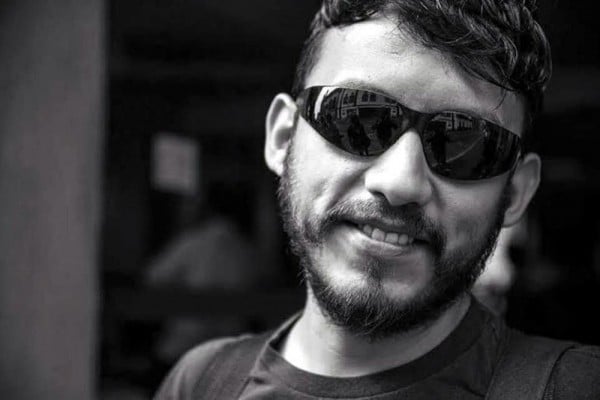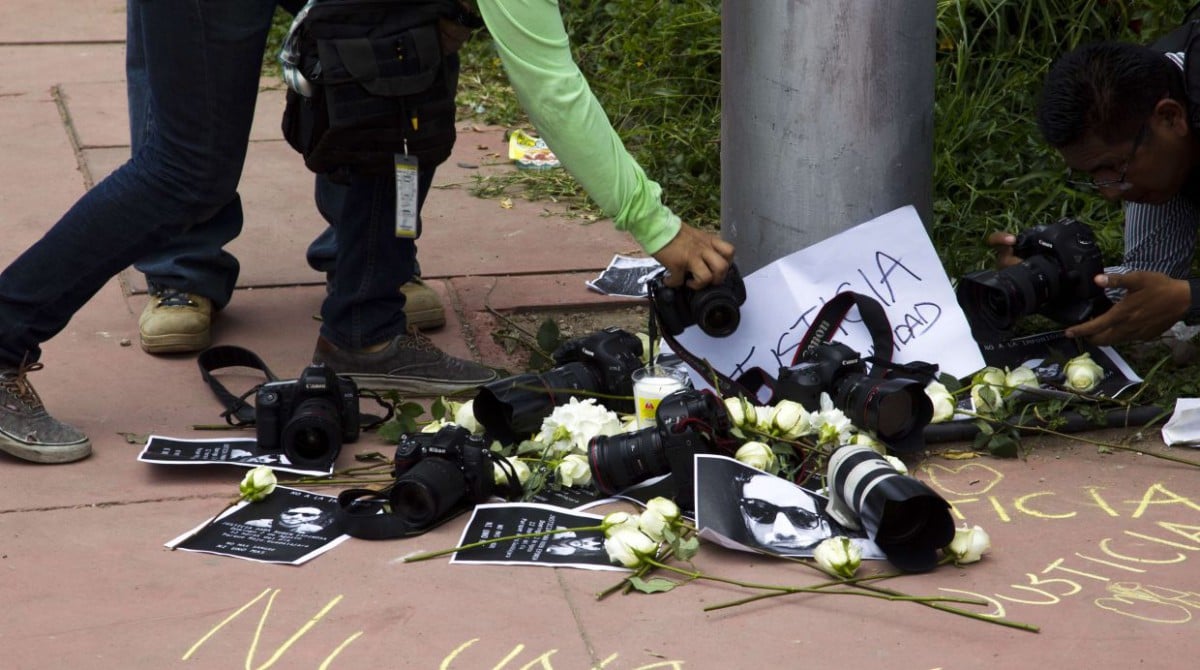Law & Politics
Mexican Photographer Ruben Espinosa Shot Dead in Mexico City Apartment
Mexico is an increasingly dangerous place for journalists.

Mexico is an increasingly dangerous place for journalists.

Sarah Cascone

Mexican photojournalist Ruben Espinosa and activist Nadia Vera were found shot to the death in an apartment in Mexico City over the weekend, along with Vera’s two roommates, and a woman who cleaned the apartment.
A reporter from Veracruz, Espinosa had fled to the capital from the Gulf Coast state in June after he had been threatened. The same for Vera, who was known to publicly criticize the governor of Veracruz, according to a recent New Yorker article.
At a press conference, the Associated Press reported, Mexico City prosecutor Rodolfo Rios Garza indicated that the police were investigating the possibility that the murders were linked to a robbery. He claimed that Espinosa had left Veracruz seeking “professional opportunities.”
“I feel there is a disdain toward investigating the journalistic motives or even motives that had to do with his displacement,” Dario Ramirez, director of the free press advocacy group Article 19, told the AP. “The issue is that he was at risk and after a month he was assassinated. These are coincidences that can’t be discarded by saying he was in the wrong place at the wrong time.”

Mexican photojournalists came together in Mexico City to remember murdered colleague Ruben Espinosa.
Photo: Alex Cruz, courtesy European Pressphoto Agency.
The Committee to Protect Journalists claims that in the last five years, 11 journalists have been murdered in Veracruz, and two reporters known for covering the region, including Espinosa, have been found dead in other parts of the country, reports the AP. To date, 37 journalists have been “forced out of their jobs” in the area, according to El Daily Post.
Mexican authorities have been accused of turning a blind eye to such deaths. The Committee to Protect Journalists maintains that roughly 90 percent of the country’s journalist murders since 1992 have not been prosecuted.
“Displaced journalists used to come to Mexico City as an island of protection. Now there is no place to go, no place to run,” an anonymous journalist lamented to the AP. The capital has previously been considered a refuge from the country’s endemic violence.

Mexican photojournalists gather in honor of murdered colleague Ruben Espinosa in Guadalajara City.
Photo: Hector Guerrero, courtesy AFP Photo/Getty Images.
Prior to fleeing Veracruz, Espinosa had been protesting the death of his colleague Regina Martinez, who was investigating government corruption when she died in 2012. Her death was ruled a robbery.
In an interview, Espinosa claimed that a government official had once told him at a student protest to “stop taking photos if you don’t want to end up like Regina.”
Article 19 had published an alert on June 15 about Espinosa being harassed and photographed outsides his home in Veracruz, reports El Daily Post. His murder occurred, the group alleges, “without authorities charged with protecting journalists lifting a finger to help Espinosa.”
In addition to being shot twice in the head by a 9-millimeter gun, Espinosa reportedly sustained severe facial injuries before his death. Some news outlets see this as evidence that he was tortured before he was killed.
Related stories:
Photographer Mary Ellen Mark, 1940-2015
Photographer Michel du Cille, Three-time Pulitzer Winner, Dead at 58
Hunter Barnes’s Stunning Documentary Photos Get Up Close With Gangs, Snake Handlers, and More